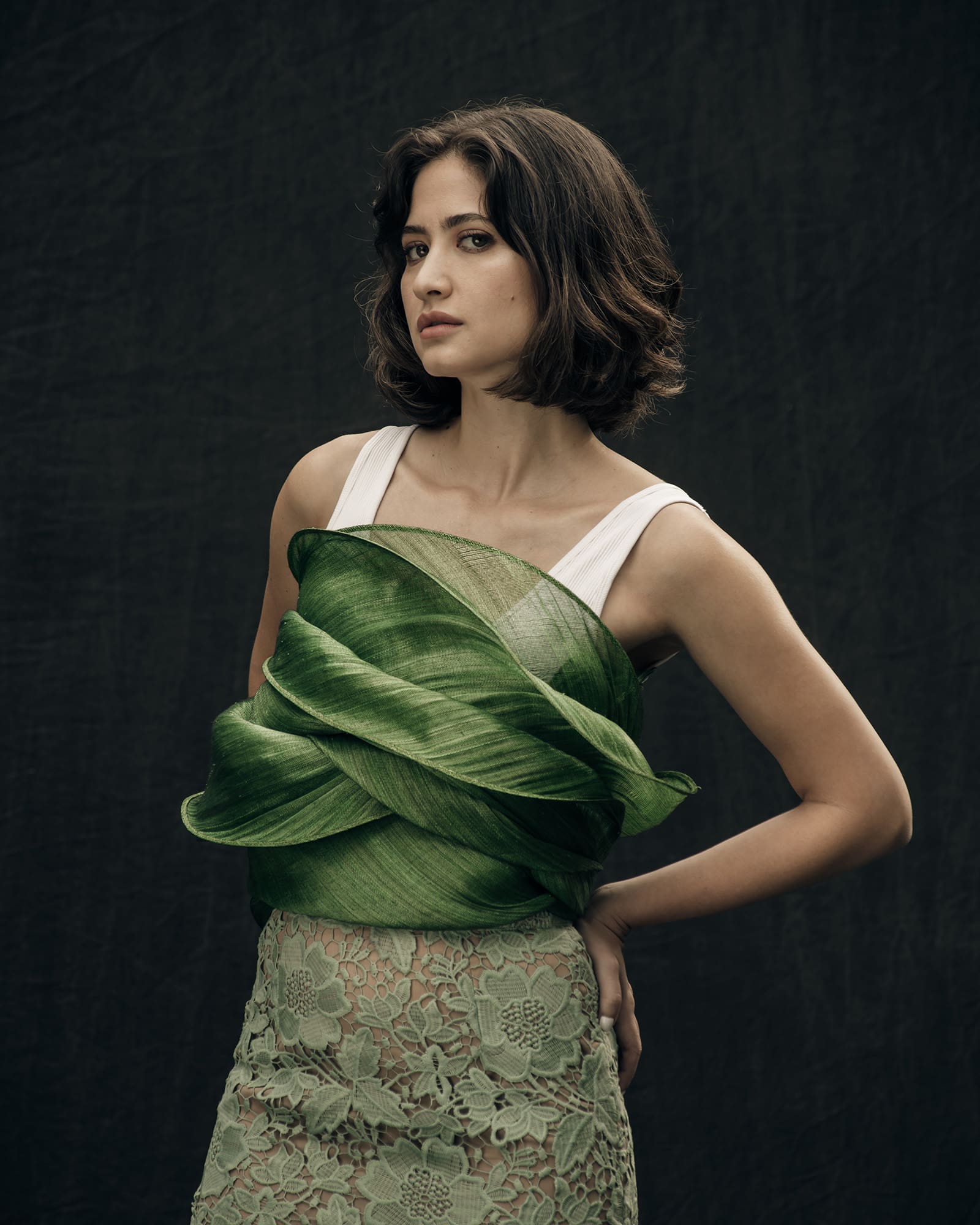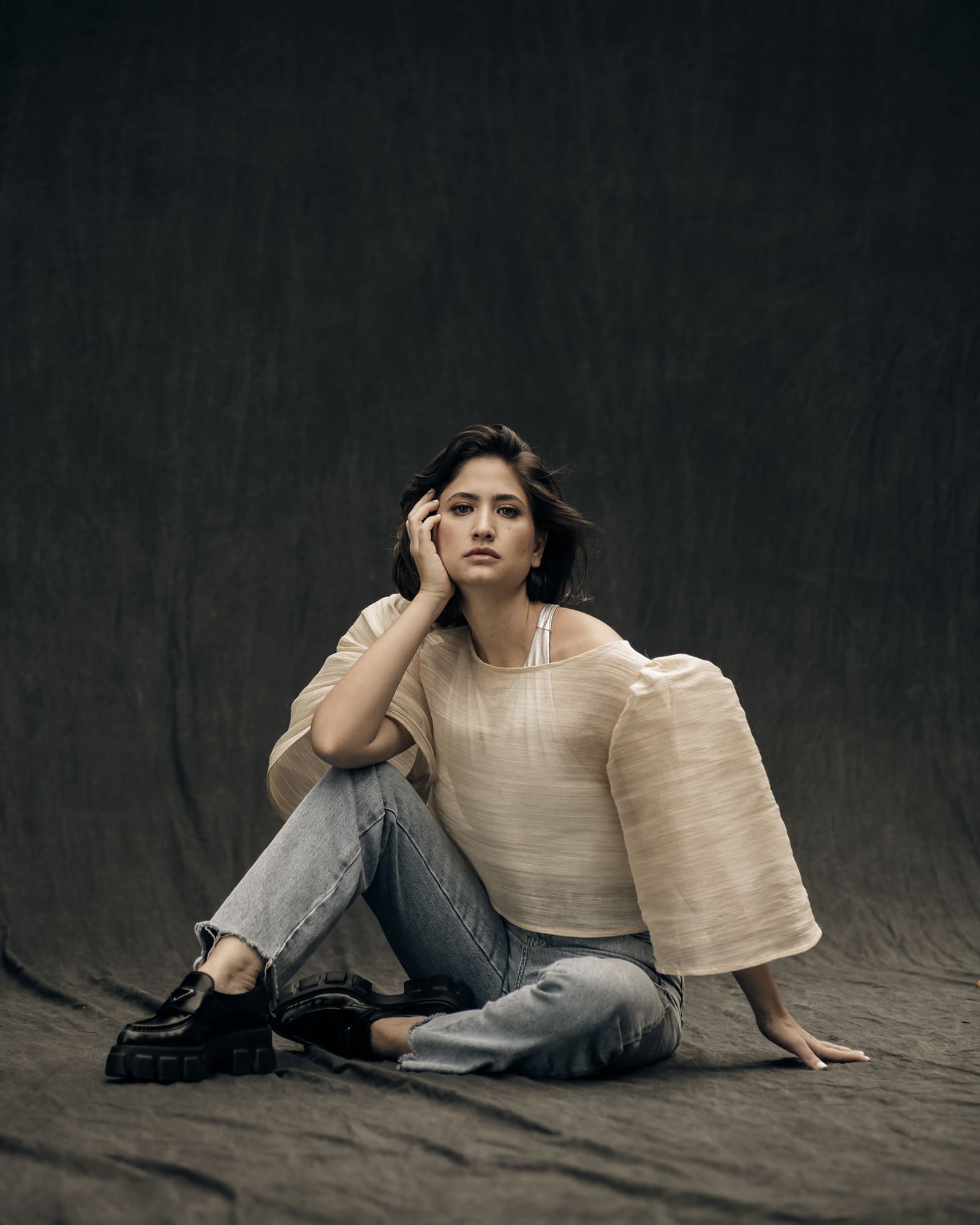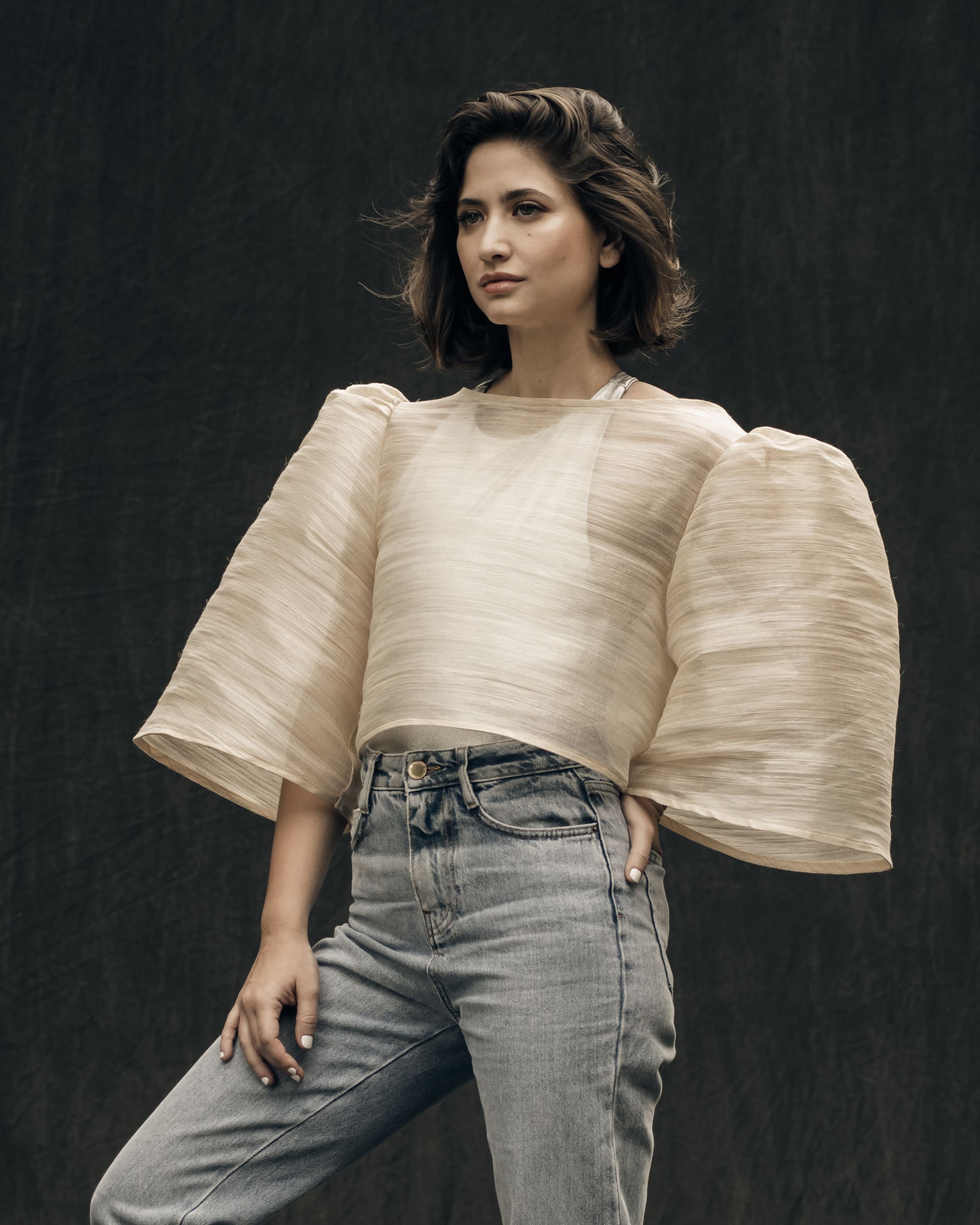Courtesy of Ditta Sandico.
Filipino designer Ditta Sandico’s creations aren’t just for your mother anymore.
For decades, the name Ditta Sandico has been synonymous with modernized Filipiniana pieces made from indigenous materials. In 2000, she pioneered the use of banana-abaca fabric woven in Catanduanes, turning them into multi-use wraps. Later, she’ll dub the fabric as banaca, wielding expertise in the use of the material, which she will be best known for.
“During those times, there was a gap in the market that I wanted to fill,” Sandico says. She was seated in her garden while a photoshoot was going on just a few meters away. The place which also housed her shop and atelier was an urban oasis, a place perfect for a creative like her to work and thrive.
“I wanted to create Filipiniana that women can travel with and wear more than once,” she says. Sandico, a working woman herself, saw more women having the need and interest to wear Filipiniana to work and as a part of their careers. “For example, the diplomatic corps,” she continues. “A full terno piece can take up half of their luggage and it can only be worn once.”
Her wraps became an instant hit among Filipino diplomats and diplomatic spouses who would don her wraps at events that indicated ‘national attire’ as the dress code. What’s interesting to note was that while many wore a Ditta Sandico wrap at these functions, there was hardly a case of identical outfits. This, thanks to the various colors available and the way the women were able to style her pieces in their own, unique way.
A new generation
Her success gave Sandico a niche in fashion, allowing her to stay within her comfort zone while keeping profitable for years. In 2008, however, while going through problems in her personal life, Sandico found a renewed sense of wonder. She started painting again, incorporating fabric into her works. She also worked with her daughter who started creating lamps from banaca, proving, yet again, the versatility of the fabric.
Around the same time, more young designers started creating modern Filipiniana pieces using indigenous materials. From jackets, casual ternos, and even jeans, Filipiniana has made its way even to everyday outfits.
For Sandico, this was a wonderful development for the industry and the weavers she have been supporting for years. “I’m comfortable with where I am and what I have built but I think it’s also time I get to reintroduce my work to the younger generation,” she says.

As Sandico’s main clientele advanced in their careers and in age, most of her pieces were boxed in a more mature category. Most of the younger generation even find her wraps intimidating and think that they can only be worn to formal events. Enter the stylish duo of model-entrepreneur Xandra Rocha-Araneta and stylist Ria Prieto.
Versatility for longevity
When Rocha-Araneta stepped into the garden for the photo shoot, most people on the set thought she was wearing an entirely new piece from Sandico. The black, strapless dress which ballooned below her knees was cinched on the waist by a leather corset Prieto paired with it. Yes, it was Filipiniana but without looking like a costume. It was edgy, almost avant garde, but still wearable.
“It’s one of my older wraps,” Ditta says.
Just a few months prior, Rocha-Araneta and Prieto heard of Sandico’s desire to reach a younger audience. They were more than happy to take on the challenge. “The beauty about Ditta’s pieces is they can be used several ways,” Prieto says. “You can shape it the way you see fit. I’ve also noticed the fabric itself takes a shape of its own so every piece is unique when worn.”
Rocha-Araneta who is often seen wearing classic Filipiniana pieces with a touch of whimsy, also has love for Sandico’s work which was first introduced to her by her mother. “Versatility is important to me,” she says. “I love being able to wear things endlessly in different ways and being able to dress it up or down. I like things that stand out. I feel no shame about being an outfit repeater.”
Beyond the banaca
Another favorite from the shoot is an oversized banaca top reminiscent of the kimona. Prieto paired it with jeans and chunky Prada Monolith loafers. It was one of the most casual looks Rocha-Araneta wore for the shoot and the most memorable.

“From Ditta’s collection, Ria and I chose our top seven pieces. Though these did not include some of my other favorites likes her playful beaded handbags and headbands,” said Rocha-Araneta. “I would wear them exactly as styled in the photos! Clearly Filipinana, but styled in more modern, very wearable ways.”
For those who want to dip their toes in incorporating more Filipiniana in one’s wardrobe, Prieto has a great tip: “Personally, I feel that we should all have at least one Filipiniana garment. It’s easiest to start with a top to be worn with a skirt or even jeans. If it’s viewed as just a top, instead of a costume then it would be less intimidating to use.
Sandico also shared that she’s been working with the Mangyan tribe and their specific weaving style. Her atelier now carries the weaves which can be seen in some of her newer designs. Colorful boleros with butterfly sleeves and even new wraps featuring the intricately woven fabric. Sandico says working with a new medium is a fun challenge. Turning indigenous fabric into wearable pieces that will be well-loved by the market is what makes the craft truly interesting. For the designer, more Filipinos should wear indigenous fabric beyond government-related functions and formal events.
“I see strong women wearing my designs. Women with more personality and flair,” she says. “They’re adventurous, brave, and creative.”
Photographer: Jerick Sanchez. Stylist: Ria Prieto. Makeup: Joemel Reyes. Hair: Patty Inojales. Model: Xandra Rocha-Araneta
